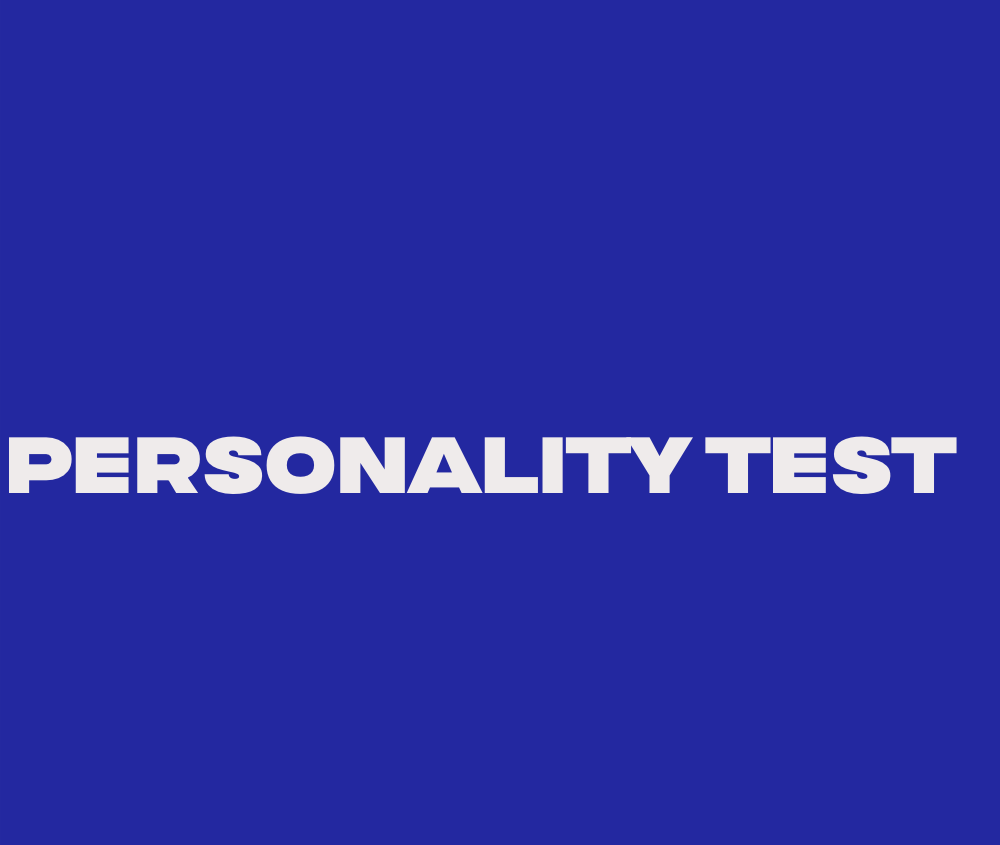Personality Exploration
East West North South Personality Test Guide

Are you aware that the four cardinal directions: North, South, East, and West, have an impact on your personality? Indeed, they do! Each cardinal point symbolizes a distinct collection of characteristics and inclinations that contribute to your personal identity. Recognizing which direction corresponds with your primary personality traits can offer essential understanding into your capabilities, areas for improvement, and ways of interacting.
Key Takeaways:
- The East West North South Personality Test helps you discover your dominant personality traits based on the four primary directions: North, South, East, and West.
- Understanding your primary direction can provide valuable insights into your strengths, weaknesses, and preferred communication style.
- The four personality types in the test are North (assertive and goal-centered), South (team-oriented and helpful), East (organized and analytical), and West (flexible and creative).
- Recognizing and appreciating the differences among the types can foster effective communication and collaboration.
- Applying the insights from the personality test can enhance personal and professional development, improve teamwork, and develop effective leadership skills.
Understanding the Personality Compass
The Personality Compass is a powerful psychological tool that helps individuals gain a deeper understanding of themselves and others. By categorizing individuals into four main personality types based on their preferences and traits, the Personality Compass provides valuable insights into individual behavior and interactions.
The four main personality types in the Personality Compass are North, South, East, and West. Each type has its own unique characteristics, strengths, and perspectives. Understanding these types can help us navigate and better comprehend the diverse range of personalities we encounter in our personal and professional lives.
“The Personality Compass is like a geographical map that guides us through the vast and intricate landscape of human behavior. It helps us uncover the hidden treasures within ourselves and discover the beauty in our differences.”
Personality assessment is a fundamental component of the Personality Compass. By evaluating individuals’ preferences, traits, and tendencies, it provides a comprehensive profile that sheds light on their natural inclinations. This profile acts as a compass, showing the way to self-awareness and personal growth.
Geographical Personality Test
The Personality Compass draws inspiration from the concept of a geographical personality test. Just as different regions on Earth possess distinct traits and characteristics, so do different personality types. Through this geographical analogy, the Compass helps us visualize and understand the complexities of human behavior.
| Personality Type | Characteristics | Strengths |
|---|---|---|
| North | Ambitious, assertive, goal-oriented | Decisiveness, leadership skills, determination |
| South | Warm, empathetic, team-oriented | Collaboration, communication, supportiveness |
| East | Analytical, organized, detail-oriented | Problem-solving, critical thinking, efficiency |
| West | Creative, innovative, flexible | Adaptability, out-of-the-box thinking, intuition |
The table above provides a brief overview of the characteristics and strengths associated with each personality type. However, it is essential to remember that these descriptions represent broad generalizations and that every individual is unique. We all have a mix of traits from each direction, but the Compass helps us identify our dominant personality type and how it influences our approach to life.
The Personality Compass serves as a valuable tool for personal and professional development, as well as for enhancing interpersonal relationships. By understanding our own personality type and appreciating the diversity of others, we can foster effective communication, collaboration, and empathy.
How to Determine Your Primary Direction
To determine your primary direction on the Personality Compass, you have two options: you can take an online test or use a simple method of self-reflection. Let’s explore both approaches:
Option 1: Personality Compass Online Test
One convenient way to determine your primary direction is by taking an online test specifically designed for the Personality Compass. These tests are easily accessible and can provide you with valuable insights into your dominant personality traits. They typically involve a series of questions that assess your preferences and behaviors, leading to an accurate identification of your primary direction. Best of all, many of these tests are available for free, making them accessible to everyone.
To find a reliable personality compass online test, simply search the web using relevant keywords like “personality compass online test” or “east west north south personality test free.” Be sure to choose a reputable test from a reliable source for accurate results. Once you complete the test, you will receive a detailed assessment of your primary direction and a breakdown of your dominant traits.
Option 2: Self-Reflection
If you prefer a more introspective approach, you can determine your primary direction through self-reflection. Start by considering the characteristics that are least like you. Think about traits that you don’t enjoy, tend to avoid, or make you feel uncomfortable. By identifying the direction that represents these least like characteristics, you can then look at the opposite direction to determine your primary direction.
For example, if you find that you are least like the North direction, which is assertive and goal-centered, your primary direction may be the South, East, or West. By considering the characteristics of these three remaining directions, you can narrow down your primary direction based on which one resonates with you the most.
Whichever method you choose, it’s important to remember that the primary direction revealed by the personality compass is just one aspect of your personality. We all have traits from each direction, but one stands out as the dominant force shaping our behavior and preferences.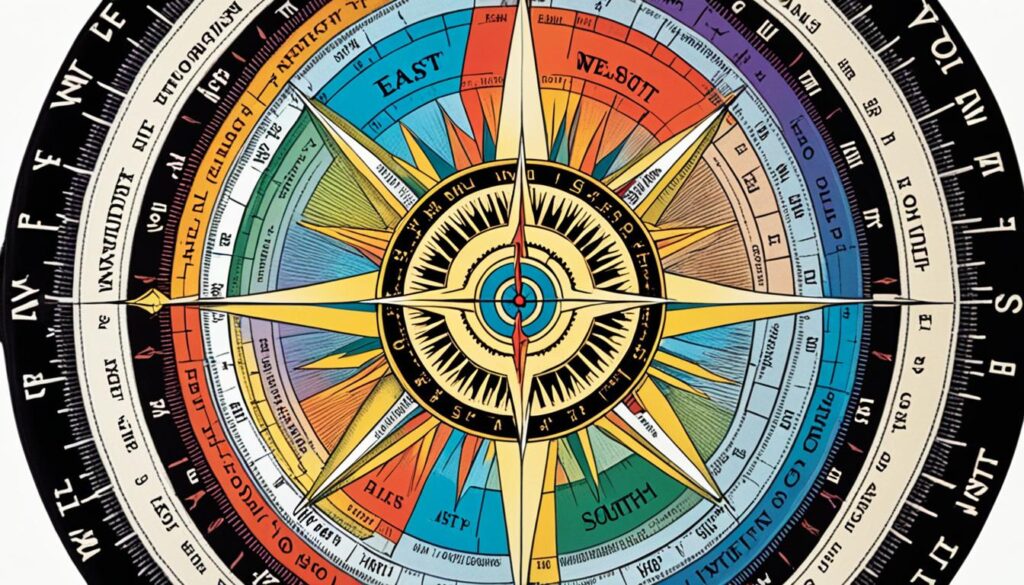
| Option | Advantages | Disadvantages |
|---|---|---|
| Personality Compass Online Test | – Convenient and accessible – Provides accurate results based on structured assessment – Many free tests available |
– Relies on subjective self-reporting – May not capture the complexity of individual personalities entirely |
| Self-Reflection | – Introspective and self-paced – Allows for personal insights and exploration – Provides a deeper understanding of one’s personality |
– Relies on personal interpretation – Can be influenced by biases or limited self-awareness |
The Four Personality Types
When it comes to the Personality Compass, there are four distinct personality types: North, South, East, and West. Each type has its own unique set of characteristics and traits that define their approach to life and interactions with others.
Let’s take a closer look at each personality type:
North Personality Type
The North personality type is characterized by assertiveness, goal-centeredness, and a competitive nature. Individuals with a dominant North direction are often driven by ambition and motivated to achieve success. They are confident decision-makers who thrive in leadership roles.
South Personality Type
The South personality type is known for being team-oriented, patient, and helpful. People with a dominant South direction prioritize collaboration and interpersonal relationships. They excel in roles that require empathy, support, and a strong sense of teamwork.
East Personality Type
The East personality type is organized, analytical, and detail-oriented. Those with a dominant East direction have a natural inclination towards structure, planning, and precision. They excel in roles that require logical thinking, problem-solving, and attention to detail.
West Personality Type
The West personality type is characterized by flexibility, innovation, and creativity. Individuals with a dominant West direction possess a natural curiosity and an ability to think outside the box. They excel in roles that require imagination, adaptability, and a fresh perspective.
| Personality Type | Characteristics |
|---|---|
| North | Assertive, goal-centered, competitive |
| South | Team-oriented, patient, helpful |
| East | Organized, analytical, detail-oriented |
| West | Flexible, innovative, creative |
Understanding the four personality types in the Personality Compass can provide valuable insights into individual behavior, preferences, and strengths. Each type brings a unique perspective to interpersonal relationships and the workplace, contributing to a diverse and dynamic society.
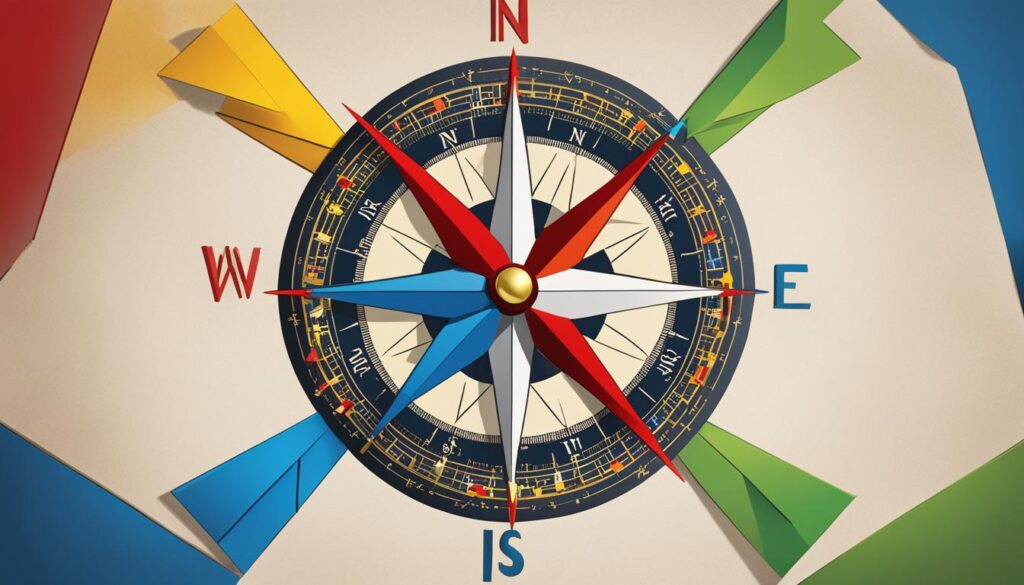
Careers and the Four Personality Directions
Understanding your primary direction on the Personality Compass can provide valuable insights into career choices and job positions that align with your dominant personality traits. Each of the four compass points – North, South, East, and West – has its own unique characteristics and strengths that lend themselves well to different career paths.
Take a look at the table below to see how the different compass points correspond to various career types:
| Compass Point | Career Types |
|---|---|
| North | Leadership roles, goal-oriented positions, decision-making positions |
| South | Collaborative roles, support-oriented positions, customer service |
| East | Analytical roles, organized positions, research, data analysis |
| West | Creative roles, innovative positions, artistic pursuits |
Remember, while these career types are often associated with each compass point, it’s important to note that individuals can excel in various fields regardless of their primary direction. The Personality Compass is meant to provide a guide, but it’s not a definitive measure of success in a particular career.
Keep in mind that your dominant personality direction doesn’t mean you can’t explore other career paths or develop skills related to other compass points. It simply indicates the direction that aligns most strongly with your natural inclinations and strengths.
Key Takeaways:
The Personality Compass can provide insights into careers that align with your dominant personality direction.
North types may excel in leadership and goal-oriented positions, while South types thrive in collaborative and support-oriented roles. East types may excel in analytical and organized positions, while West types may thrive in creative and innovative fields.
Remember, these associations are not set in stone, and individuals can find success in various fields regardless of their primary direction.

Exploring careers that resonate with your dominant direction on the Personality Compass can help you find fulfillment and success in your professional life. Remember to also consider your interests, values, and personal goals when making career decisions.
Next, we’ll delve into the differences and similarities among the four personality types to gain a deeper understanding of the unique traits and perspectives within the Personality Compass.
Differences and Similarities Among the Types
While each personality type has its own unique characteristics, strengths, and weaknesses, there are also commonalities among the different types. Understanding these differences and similarities is essential for fostering effective communication and collaboration.
Differences Among the Types
Let’s explore some of the key personality differences:
- North types are typically assertive, goal-centered, and competitive, focusing on achieving results.
- South types lean towards being team-oriented, patient, and helpful, valuing collaboration and support.
Conversely, East types lean towards being organized, analytical, and detail-oriented, with a methodical approach to tasks and problems.
Meanwhile, West types are often described as flexible, innovative, and creative, bringing fresh perspectives to various situations.
Similarities Among the Types
Although there are distinct differences, it’s important to note some commonalities shared by the personality types:
- North and East types tend to be more results-oriented and focused on achieving goals.
- South and West types, on the other hand, may be more relationship-oriented and value-driven.
Recognizing and appreciating these differences and similarities can help create a more harmonious and collaborative environment, promoting effective teamwork and communication.
| Personality Type | Characteristics |
|---|---|
| North | Assertive, goal-centered, competitive |
| South | Team-oriented, patient, helpful |
| East | Organized, analytical, detail-oriented |
| West | Flexible, innovative, creative |

Dominant and Subdominant Personality Types
In the Personality Compass, our individual personalities are shaped by a dominant type, our primary direction, and a subdominant type, our second strongest direction. Both of these types work together to create a more comprehensive understanding of who we are. While our dominant type represents our primary traits, our subdominant type adds depth and nuance to our personality.
Let’s take a closer look at how these dominant and subdominant types interact and influence our overall personality. The dominance of each type can vary from person to person, resulting in different combinations of dominant and subdominant types.
| Personality Type | Dominant Traits | Subdominant Traits |
|---|---|---|
| North | Assertive, goal-centered, competitive | Decisive, independent, driven |
| South | Team-oriented, patient, helpful | Supportive, empathetic, nurturing |
| East | Organized, analytical, detail-oriented | Logical, methodical, systematic |
| West | Flexible, innovative, creative | Adaptive, intuitive, imaginative |
It’s important to remember that these dominant and subdominant types are not static labels, but rather flexible frameworks that provide insights into our preferences and strengths. They offer valuable guidance for self-awareness and personal growth.
*The compass point chart visually represents the dominant and subdominant personality types in the Personality Compass.
The Optimal Discussion for Each Compass Point
The optimal discussion for each compass point depends on the characteristics and preferences of that particular type. Understanding and adapting to these differences can significantly enhance group dynamics and promote effective communication and collaboration.
North Types:
North types are assertive, goal-oriented individuals who thrive in direct and efficient discussions. They appreciate concise communication, focused on achieving results and making progress. Their preference is for discussions that are structured, action-oriented, and have clear objectives. It is important to stay on track and avoid unnecessary digressions to keep North types engaged.
East Types:
East types are organized and analytical individuals who enjoy in-depth analysis and structure. They value discussions that allow for detailed exploration of ideas and concepts. East types thrive when discussions are logical, systematic, and provide a comprehensive understanding of the topic at hand. They prefer conversations that are well-organized and follow a clear outline or agenda.
South Types:
South types are team-oriented and patient individuals who appreciate discussions that foster collaboration and consensus-building. They value open dialogue, where everyone’s opinions and ideas are heard and respected. South types feel most comfortable in discussions that allow for equal participation and involvement from all participants. They excel in creating a supportive and inclusive atmosphere.
West Types:
West types are flexible and creative individuals who thrive in discussions that encourage innovation and outside-the-box thinking. They appreciate brainstorming sessions that allow for the exploration of new ideas and possibilities. West types excel in discussions that foster a free flow of ideas, creativity, and imagination. They contribute by offering unique perspectives and unconventional solutions.
By adapting the discussion style to accommodate the preferences of each compass point, group dynamics can be optimized. This allows for a more inclusive and productive discussion, leveraging the diverse personality traits of each individual. Effective communication within the group is essential for achieving common goals and maintaining a harmonious working environment.
The Importance of Understanding Differences
Effective communication and collaboration in a team or group setting rely heavily on understanding the differences among the four compass points. Each type brings unique strengths and perspectives, creating a diverse and valuable collective. By appreciating and valuing these differences, we can leverage the individual strengths of each compass point to achieve our common goals.
“Strength lies in differences, not in similarities.” – Stephen R. Covey
When we embrace and respect personality differences, we unlock the full potential of effective collaboration. Each compass point offers a distinct set of skills and insights that contribute to the overall success of a team. By valuing diversity, we create a harmonious environment where every individual feels empowered to express their ideas and contribute meaningfully to the group’s efforts.
Fostering Effective Collaboration
To foster effective collaboration, it is essential to recognize and appreciate the unique characteristics that each compass point brings to the table.
- The North type brings assertiveness and goal-oriented focus, driving the team forward with determination and clarity.
- The South type embodies teamwork, patience, and a helping spirit, creating a supportive and harmonious atmosphere within the group.
- The East type adds organization, analytical thinking, and attention to detail, ensuring that projects are well-structured and executed with precision.
- The West type introduces flexibility, innovation, and creativity, inspiring fresh ideas and imaginative problem-solving approaches.
By acknowledging and embracing these diverse perspectives, we open ourselves up to a world of possibilities and enhanced collaboration. The varied strengths and viewpoints of each compass point complement one another, leading to more informed decision-making, creative problem-solving, and successful outcomes.
The Role of Perception in Relationships
Perception plays a significant role in how individuals interpret and understand each other in relationships. Our unique personalities, influenced by our dominant and subdominant compass points, shape our perceptions and point of view.
When we interact with others, we bring our own perspective to the table, which may differ from theirs. This divergence in perception can either enhance or hinder our relationships. It is important to acknowledge that multiple perceptions can coexist and that understanding and respecting different points of view can lead to stronger and more harmonious connections.
“The greatest glory in living lies not in never falling, but in rising every time we fall.” – Nelson Mandela
By recognizing the role of perception, we become more attuned to the dynamics of our relationships. We understand that our own viewpoint is not the only valid one, and we become open to considering others’ perspectives.
Fostering Understanding and Empathy
Developing empathy and understanding is crucial in navigating the complexities of relationships. By actively seeking to understand where others are coming from, we can bridge the gap created by differing perceptions.
When conflicts arise, it is important to approach them with an open mind and a willingness to listen. By genuinely trying to understand the other person’s perspective, we can find common ground and resolutions that honor both parties’ needs.
The Power of Communication
Clear and effective communication is key to overcoming perceptual differences in relationships. When expressing our thoughts and feelings, it is essential to use language that is inclusive and respectful.
Active listening is equally important. By giving our full attention and seeking to understand rather than just respond, we create an environment where different perceptions can be heard and appreciated.
| Benefits of understanding perception in relationships: |
|---|
| Enhanced empathy |
| Improved conflict resolution |
| Stronger relationships |
| Effective communication |
When we actively work on understanding perception in relationships, we can build stronger connections and navigate challenges more effectively. By embracing diverse perspectives and valuing different points of view, we foster a culture of empathy, respect, and harmony.
Similarities Among the Types
While each compass point has its own unique characteristics, there are also similarities among the types. Understanding these shared traits can foster a sense of common ground and facilitate effective collaboration.
For instance, North and East types both value efficiency and goal-oriented behavior. They thrive in structured environments and enjoy working towards measurable objectives. Whether it’s meeting deadlines or accomplishing tasks, their drive for results is a shared characteristic.
On the other hand, South and West types both prioritize relationships and a people-centered approach. They excel in team-oriented settings and value collaboration and support. Building strong connections and fostering a positive work environment are key common traits for these types.
Recognizing these similarities can help us find areas of alignment and better understand one another. By acknowledging the common ground, we can bridge differences and enhance our collaborative efforts.
The Impact of Compass Points in Group Dynamics
Group dynamics and collaborative work are greatly influenced by the compass points in the Personality Compass. Each type brings specific strengths and perspectives to the group, shaping decision-making processes and interpersonal relationships. By understanding and appreciating these dynamics, groups can leverage the diverse strengths of each compass point to achieve collective success.
“The collaboration of different compass points leads to a synergy of ideas and approaches that can propel a group towards innovation and balanced decision-making.”
When individuals with different compass points come together, they bring unique perspectives and skill sets that enhance the group’s overall performance. North types, with their assertiveness and goal-oriented nature, may provide direction and drive. South types, on the other hand, with their team-oriented mindset and patience, can foster collaboration and build strong relationships within the group.
East types, known for their organizational skills and attention to detail, contribute structure and methodical thinking. Meanwhile, West types bring flexibility, innovation, and creativity, injecting fresh ideas and alternative perspectives into team discussions.
Understanding and leveraging these diverse strengths can lead to stronger problem-solving capabilities and more effective group dynamics. By embracing the compass points and fostering an inclusive environment that values each individual’s contributions, groups can tap into the collective intelligence and achieve optimal outcomes. This can be achieved through open and respectful compass point discussions that allow for the exploration of different perspectives and ideas.
Cultivating a Collaborative Environment
In order to create a collaborative environment where all compass points can thrive, it is essential to establish clear communication channels and foster an atmosphere of inclusivity. Encouraging active participation from all group members and valuing diverse opinions can help prevent dominant personalities from overshadowing valuable contributions from other compass points.
- Developing active listening skills
- Encouraging open and respectful communication
- Creating opportunities for equal participation
- Fostering a culture of constructive feedback
- Recognizing and appreciating the strengths of each compass point
By embracing the concept of the Personality Compass in group dynamics, individuals can enhance their understanding of one another and capitalize on the unique strengths each compass point brings. The collaborative interplay of these different perspectives can result in innovative ideas, effective problem-solving, and successful team outcomes.
Applying Compass Points in Personal and Professional Development
The insights gained from understanding the compass points can have a profound impact on personal and professional development. By recognizing and leveraging our dominant and subdominant types, we can enhance our self-awareness, improve our communication skills, and develop effective leadership styles. Embracing our unique attributes can lead to personal growth and success in various aspects of our lives.
Enhancing Self-Awareness
Understanding our dominant and subdominant types provides valuable insight into our personality traits, preferences, and strengths. It allows us to identify areas of personal development and focus on building upon our natural abilities. By leveraging self-awareness, we can make informed decisions, better manage our emotions, and cultivate healthy relationships both personally and professionally.
Improving Communication Skills
Effective communication is essential for building positive relationships and achieving successful outcomes. By understanding the compass points, we gain insight into the communication styles of others and can adapt our approach accordingly. For example, if we know someone has a dominant North type, we can engage in direct and goal-oriented discussions, while with someone with a dominant West type, we may explore innovative and creative ideas. This knowledge enables us to connect with others more effectively, minimize misunderstandings, and foster collaboration.
Developing Effective Leadership Styles
Leadership skills are vital for success in both personal and professional settings. By understanding our dominant and subdominant types, we can tailor our leadership approach to leverage our natural strengths. For instance, a leader with a dominant South type may excel in team-oriented environments, where they can foster collaboration and support the development of their team members. On the other hand, a leader with a dominant East type may thrive in structured and analytical settings, showcasing their organizational skills and attention to detail. By adapting our leadership style to match our compass type, we can inspire and motivate others, driving positive change and achieving our goals.
| Application | Benefits |
|---|---|
| Self-awareness | Improved decision-making, emotional intelligence, and relationship management. |
| Communication Skills | Enhanced understanding, effective collaboration, and minimized conflicts. |
| Leadership Styles | Optimized utilization of strengths, increased team performance, and goal achievement. |
Using the Compass Points for Team Building and Leadership Development
Team building and leadership development are critical components of fostering a collaborative and successful work environment. By leveraging the insights gained from the compass points, leaders can create teams that embrace diversity and harness the unique strengths of each individual. This holistic approach enhances teamwork, decision-making, and overall organizational performance.
Understanding the different compass types within a team is key to building an inclusive and balanced environment. Each personality type brings distinct perspectives, skills, and contributions to the table. By recognizing and valuing these differences, leaders can establish a culture of collaboration and growth.
Incorporating compass point discussions and activities into team building exercises can be highly effective. These interactive sessions encourage team members to identify and appreciate the diverse perspectives and skills within their group. By engaging in open dialogue and exercises that promote self-awareness, individuals can develop a deeper understanding of themselves and their peers.
Moreover, the compass points provide a framework for exploring team dynamics and addressing areas of improvement. Leaders can identify potential gaps in skill sets or communication styles and develop targeted strategies to enhance collaboration. By aligning individuals’ strengths and preferences with specific roles and tasks, leaders can ensure that teams are not only productive but also aligned with organizational goals.
Fostering Collaboration
Collaboration is a cornerstone of effective team building and leadership development. The compass points offer valuable insights into how individuals collaborate and contribute to team efforts. By aligning team members according to their personality types, leaders can create synergies and capitalize on diverse perspectives.
“The strength of the team is each individual member. The strength of each member is the team.”– Phil Jackson
Recognizing and appreciating the unique strengths of each compass point can lead to improved communication and collaboration. For example, North types may excel in setting clear goals and driving results, while South types may thrive in supporting others and building relationships. East types can bring analytical thinking and organization to the table, while West types can inspire innovation and creativity.
Leadership Development
Leadership development is an essential aspect of team building. The compass points provide valuable insights into leadership styles and preferences. Understanding these nuances can help leaders adapt their approaches to better suit the individuals they lead.
Leaders can use the compass points as a reference to identify their own leadership strengths and areas for growth. By recognizing their dominant and subdominant types, leaders can leverage these characteristics to enhance their leadership style and address potential blind spots.
Furthermore, the compass points can inform leadership development programs, helping leaders tailor their strategies to foster growth and empower their teams. By embracing the unique strengths of each personality type, leaders can create a supportive and inclusive environment that encourages the development of individual potential.
| Compass Point | Leadership Style |
|---|---|
| North | Decisive, goal-oriented, and results-driven |
| South | Supportive, empathetic, and relationship-oriented |
| East | Structured, analytical, and detail-oriented |
| West | Innovative, adaptable, and creative |

In conclusion, the compass points provide valuable insights for team building and leadership development. By leveraging the strengths and diversity of each personality type, leaders can create cohesive and high-performing teams. Incorporating compass point discussions and activities can foster collaboration, improve communication, and enhance leadership effectiveness. Ultimately, by embracing the power of the compass points, organizations can unlock the full potential of their teams and drive sustainable success.
Conclusion
The East West North South Personality Test is a valuable tool for gaining insights into our individual personality traits and preferences. By understanding the unique characteristics associated with each compass point, we can gain a deeper understanding of ourselves and others, leading to improved communication, collaboration, and personal growth.
Embracing the diversity of the compass points allows us to appreciate the varied strengths and perspectives that each type brings to the table. This appreciation fosters positive relationships and creates a more inclusive environment, both personally and professionally. By utilizing the insights gained from this psychological compass, we can enhance our self-awareness, develop effective communication strategies, and cultivate strong leadership skills.
As an individual, the East West North South Personality Test helps us navigate our own personality traits and understand how they influence our interactions with others. By unlocking this self-awareness, we can enhance our personal growth and make conscious choices that align with our authentic selves. Whether we identify with the assertive North type, the team-oriented South type, the organized East type, or the flexible West type, the compass points offer us a compass for self-reflection and self-improvement. The East West North South Personality Test is not designed to specifically determine guardian protector personality types. This test categorizes individuals based on their responses to various situational scenarios. However, the results may indirectly reveal traits commonly associated with the guardian protector personality type. The East West North South Personality Test is designed to help individuals discover their unique personality traits based on the concept that everyone has characteristics from each of the four directions – North, South, East, and West – but one direction will capture the essence of their personality more accurately than the others. You can take an online test or use a simple method of self-reflection to determine your primary direction. One approach is to identify the direction that is least like you, and then look at the opposite direction to determine your primary direction. The four personality types in the Personality Compass are North, South, East, and West. Each type has its own unique characteristics and traits. Each primary direction in the Personality Compass aligns well with certain careers and job positions. For example, those with a dominant North direction may excel in leadership roles, while those with a dominant South direction may thrive in collaborative and support-oriented roles. Each compass point has its own unique characteristics, strengths, and weaknesses, but there are also commonalities among the different types. For example, North and East types tend to be more results-oriented, while South and West types may be more relationship-oriented. The compass points have a significant impact on group dynamics and collaboration. Each type brings specific strengths and perspectives, which can influence decision-making processes and interpersonal relationships. Understanding the compass points can be applied to personal and professional development by leveraging dominant and subdominant types to enhance self-awareness, improve communication skills, and develop effective leadership styles. By understanding the different compass types within a team, leaders can create a more inclusive and balanced environment that leverages the strengths of each individual. Compass point discussions and activities can help teams identify and appreciate diverse perspectives and skills. Understanding the compass points offers valuable insights into individual personality traits, which can lead to improved communication, collaboration, personal growth, and success in both personal and professional settings.Can the East West North South Personality Test Determine Guardian/Protector Personality Types?
FAQ
What is the East West North South Personality Test?
How can I determine my primary direction on the Personality Compass?
What are the four personality types in the Personality Compass?
How do the personality types align with careers and job positions?
What are the differences and similarities among the four compass points?
What is the impact of the compass points on group dynamics and collaboration?
How can the insights from the compass points be applied to personal and professional development?
How can the compass points be used for team building and leadership development?
What are the benefits of understanding the compass points?
Augustus is the visionary leader and Editor-in-Chief of Personality-Test.net. With an unwavering commitment to quality and authenticity, he oversees all content, ensuring it enlightens and empowers our audience. Augustus believes deeply in the transformative power of self-awareness and is dedicated to making Personality-Test.net a beacon for those on a journey to understand themselves better.
Enneagram of Personality
10 Signs of Demonic Influence in Enneagram Types
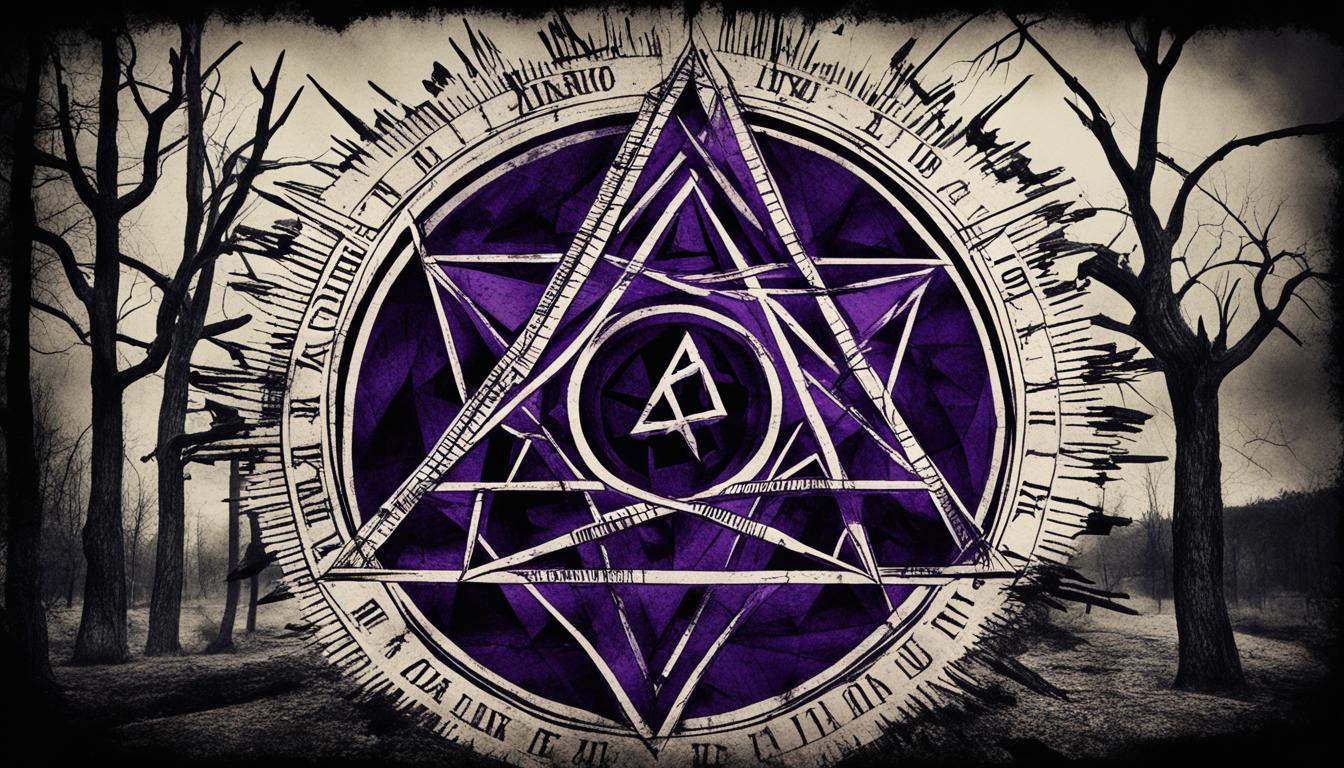
Welcome to our intriguing journey into the enneagram and its possible link to demonic influences. Were you aware that spiritual intervention can show itself in unique forms among various enneagram types? It’s a fact! Whether you doubt or have faith, you might be shocked by the effects of these influences. This piece will examine the signals and characteristics that could suggest the existence of demonic energy in the enneagram. So, get ready to discover the more sinister aspect of the enneagram!
Key Takeaways:
- Exploring the enneagram’s potential connection to demonic influences
- Different signs and manifestations of potential spiritual interference
- The importance of recognizing and engaging in spiritual warfare
- Understanding the potential dark energies within the enneagram
- Seeking transformation and spiritual discernment in navigating the enneagram
Feeling Discouraged, Defeated, and Depressed
Feeling discouraged, defeated, and depressed is a common sign of the dark side of the enneagram and its potential negative influences. It encompasses a sense of hopelessness, overwhelming burdens, and a lack of inner peace, leading to the feeling of wanting to give up. These emotions can be fueled by the evil energies associated with the enneagram, indicating the presence of demonic influence.
When feeling discouraged, defeated, and depressed, it’s important to recognize that these emotions may not solely be a result of personal circumstances, but could also be influenced by external forces. The enneagram serves as a gateway where evil energies can seep into our lives, affecting our emotions and well-being. It’s crucial to be aware of these negative influences and take steps to protect ourselves from their effects.
“Feeling discouraged, defeated, and depressed can be indicative of the enneagram’s dark side and the potential presence of evil influences.”
Understanding the connection between the enneagram and these negative emotions is vital in order to navigate its potential dark energies. By acknowledging and addressing the impact of the enneagram’s dark side, we can work towards finding healing, restoration, and spiritual growth.
Recognizing the Signs:
- A sense of hopelessness
- Overwhelming burdens
- Lack of inner peace
- Feeling like giving up
These signs should not be ignored, as they may indicate a deeper spiritual battle that needs to be confronted. By addressing the negative influences and evil energies associated with the enneagram, we can regain a sense of peace, joy, and purpose.
Protecting Yourself from Negative Influences:
- Engage in spiritual practices that promote positivity and wellbeing.
- Surround yourself with supportive and uplifting individuals.
- Seek guidance from trusted spiritual leaders or mentors.
- Develop a strong spiritual foundation through prayer and meditation.
Remember, you have the power to overcome the negative influences and evil energies associated with the enneagram. By staying vigilant and seeking spiritual protection, you can navigate the potential pitfalls and find a path towards spiritual growth and transformation.
Loss of Spiritual Desire
One of the signs that may indicate potential demonic influence in the enneagram is a loss of spiritual desire. As individuals delve into the enneagram, they may encounter difficulties in prayer, connecting with other Christians, and engaging in spiritual activities. This spiritual apathy can be unsettling, as it hinders their ability to deepen their faith and seek communion with God.
The enneagram’s dark side can draw individuals towards occult practices or open them up to the influence of satanic forces. These influences may divert their attention from the pursuit of spiritual growth and lead them astray. It is important for individuals to be aware of these potential pitfalls and understand the spiritual warfare that may manifest within the realm of the enneagram.
“Do not be overcome by evil, but overcome evil with good.” – Romans 12:21
When encountering a loss of spiritual desire within the context of the enneagram, it is crucial to seek refuge in the teachings of Scripture and surround oneself with a community of believers. By engaging in spiritual practices such as meditation, fasting, and prayer, individuals can actively combat the satanic influences that may arise from the enneagram. Additionally, seeking the guidance of trusted spiritual mentors or clergy can provide valuable support in navigating the complexities of spiritual warfare.
| Symptoms of a Loss of Spiritual Desire: | How to Overcome: |
|---|---|
| Feeling disconnected from God | Focus on cultivating a personal relationship with Him through prayer and scripture reading |
| Difficulty engaging in spiritual activities | Start with small steps and gradually increase involvement in community prayer, worship, and service |
| Drawn towards occult practices | Redirect attention towards practices aligned with biblical teaching and seek spiritual guidance |
| Feeling disconnected from fellow Christians | Join small groups or Bible study circles to foster community and accountability |
By proactively addressing a loss of spiritual desire, individuals can resist the satanic influences that may infiltrate the enneagram and instead experience a deepening of their faith and connection with God.
Physical Fatigue and Sickness
Physical fatigue and sickness can be manifestations of demonic influence in the enneagram. When under the grip of such influence, individuals may experience a deep sense of drain, lack of energy, and motivation. These physical symptoms are often accompanied by a general feeling of being unwell. The presence of supernatural entities and the evil energies associated with the enneagram can exacerbate these physical manifestations.
If left unaddressed, this demonic influence can have a profound impact on our overall well-being. It is crucial to recognize the connection between these physical symptoms and the dark side of the enneagram. By acknowledging the influence of supernatural entities and the evil energies at play, we can take the necessary steps to protect ourselves and seek spiritual healing.
In the midst of physical fatigue and sickness, it is important to remember that we have the power to overcome these challenges. By relying on our faith and seeking guidance, we can find the strength to resist the nefarious forces that seek to harm us.
The Toll on Mind, Body, and Spirit
Effects of demonic influence in the enneagram go beyond the physical realm. The toll on our mind, body, and spirit can be significant. By recognizing the signs and symptoms associated with this influence, we can better understand the scope of the challenges we face.
- Physical fatigue and lack of energy
- Motivational challenges and lack of drive
- Difficulty in focusing and making decisions
- Impaired cognitive function and clarity
- Emotional instability and mood swings
These challenges not only affect our physical well-being but also have a profound impact on our mental and emotional state. It is crucial to address and confront the influence of evil energies and supernatural entities in order to restore balance and find healing.
Seeking spiritual guidance, practicing self-care, and surrounding ourselves with supportive communities can aid in the process of overcoming these challenges. By protecting ourselves from the malevolent forces associated with the enneagram, we can embark on a journey of healing and restoration.
Doubting God’s Goodness
Doubting God’s goodness is a common occurrence when dealing with the enneagram and negative energy. It can be a sign of potential demonic influence, leading to struggles in trusting God and experiencing feelings of anger or disappointment towards Him. Many individuals may even believe that God is punishing or mad at them, adding to the confusion and spiritual turmoil within the context of the enneagram.
To better understand the connection between the enneagram and spiritual protection, it is essential to explore the doubts that arise. Negative energies can cloud our perception of God’s goodness, making it challenging to maintain a strong faith. However, recognizing the influence of demons and the potential for enneagram’s negative forces can help us navigate these doubts and seek spiritual protection.
When confronted with doubts about God’s goodness within the enneagram, it is crucial to cultivate a deeper understanding of the demonic influences at play. By engaging in spiritual discernment and seeking guidance, we can find the strength to overcome these doubts and reaffirm our belief in a loving and benevolent God.
Remember, the battle with demonic influences within the enneagram is a spiritual one, and protecting ourselves from negative energy is essential for maintaining a healthy connection with God.
In the next section, we will explore the manifestation of negative and disturbing thought patterns in relation to the enneagram and demonic influences.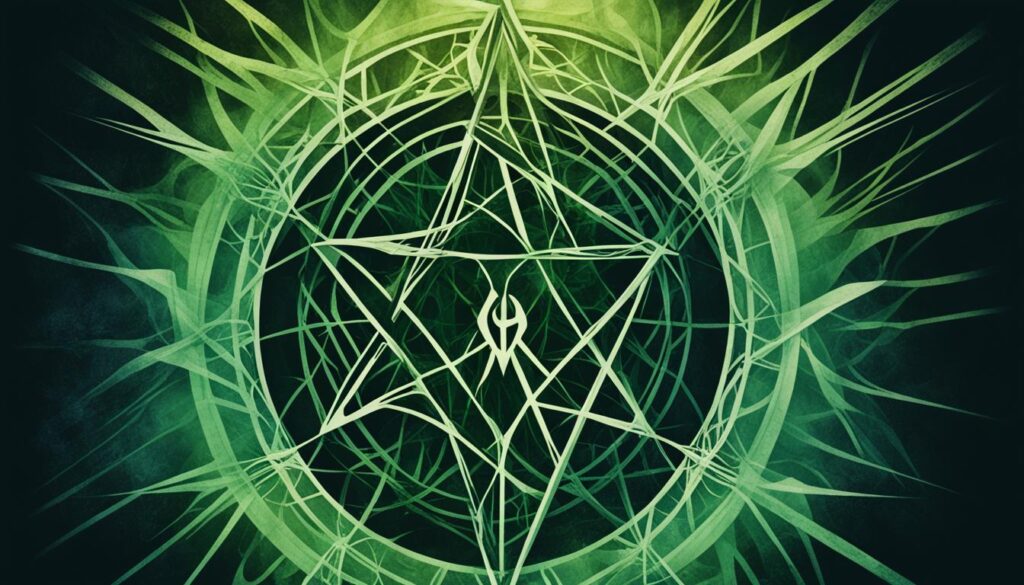
Negative, Disturbing Thought Life
The enneagram can be a breeding ground for negative and disturbing thoughts. Our minds can become overwhelmed with anxious, fearful, or worrisome thoughts, leading us down a spiral of negativity. We may even find ourselves trapped in thoughts that convince us nobody cares about us, fueling feelings of isolation and despair.
These thought patterns can be influenced by the shadow side of the enneagram and the malevolent forces that lurk within. It is essential for us to recognize the impact of these negative energies on our thought life and take steps to address them through enneagram shadow work.
“Negative thoughts are like unwelcome guests in our minds. They invade our peace, distort our perception of reality, and hinder our personal growth.”
Enneagram Shadow Work: Defying Demonic Influence
Enneagram shadow work involves delving into the darker aspects of our personalities and confronting the negative energies that manifest within the enneagram. By shining a light on the hidden corners of our minds, we can bring awareness to the demons that lurk within and begin the process of healing and transformation.
Through introspection, self-reflection, and embracing self-compassion, we can challenge the negative thought patterns that plague our enneagram experience. This work allows us to disengage from the influences of demons and navigate the enneagram with greater clarity and self-awareness.
Release the Grip of Negative Energies
It is crucial for us to understand that we have the power to release ourselves from the grip of negative energies within the enneagram. By acknowledging the presence of demons and their influence on our thought life, we can actively combat their power.
Engaging in practices such as meditation, affirmations, and prayer can help us reclaim control over our minds and replace negative thoughts with positive ones. Additionally, seeking support from trusted spiritual guides and communities can provide guidance and encouragement as we navigate the complexities of the enneagram.
Remember, we are not alone in this battle against demonic influence. By acknowledging and addressing the negative thought life associated with the enneagram, we can reclaim our inner peace and align ourselves with the positive energies that promote growth, healing, and spiritual transformation.
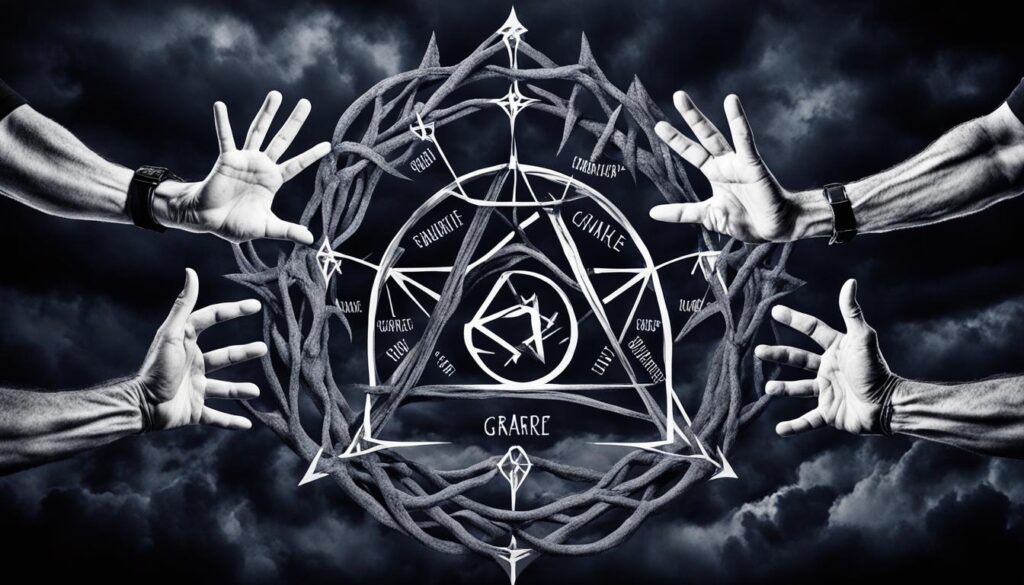
Thinking About Going Back to Your Old Lifestyle
The enneagram’s dark side may tempt us to consider returning to our old lifestyle patterns. It’s unfortunate that thoughts of going back to habits we have previously overcome can resurface. However, it is essential that we recognize these temptations as inner demons and stay focused on our transformative journey of enneagram self-awareness.

Old Emotional Wounds Resurfaced
The enneagram’s influence has the potential to resurface old emotional wounds that we believed we had already addressed. This can be an unexpected and distressing experience, as it brings back pain and struggles from our past that we thought were behind us.
Confronting these resurfaced wounds requires engaging in the spiritual warfare of the enneagram shadow and actively addressing the negative traits associated with our enneagram type. By doing so, we can begin the process of healing and transformation.
In recognizing and acknowledging these old emotional wounds, we become aware of the impact they have on our lives and relationships. This self-awareness is a crucial step towards growth and self-improvement.
Understanding the Enneagram Shadow
The enneagram shadow represents the darker aspects of our personality type that we may be unaware of or tend to suppress. It includes our negative traits, fears, and unconscious patterns of behavior. By delving into our enneagram shadow, we can gain a deeper understanding of ourselves and uncover the root causes of our emotional wounds.
Through this process, we discover that our enneagram type is not inherently bad or negative. Instead, it is a tool for self-discovery and growth. By shining a light on our enneagram shadow and facing our negative traits head-on, we can transcend our limitations and cultivate healthier, more fulfilling lives.
Healing through Spiritual Warfare
Spiritual warfare within the enneagram involves actively engaging in the battle against negative influences and forces that seek to hold us back. It is a transformative journey that requires courage, self-reflection, and a willingness to confront our inner demons.
By embracing spiritual warfare, we can reclaim our power and break free from the cycle of old emotional wounds and negative patterns. This process involves seeking divine guidance, developing self-awareness, and utilizing spiritual practices to protect ourselves from further harm.
It is essential to remember that the enneagram is not inherently evil or demonic. Rather, it is a tool that can uncover both our light and shadow aspects. By engaging in spiritual warfare within the enneagram, we can navigate the negative traits associated with our type and work towards healing and personal growth.
| Enneagram Shadow | Negative Traits |
|---|---|
| Repressed emotions | Emotional volatility |
| Unconscious fears | Anxiety and insecurity |
| Automatic behavioral patterns | Rigid and controlling tendencies |
| Resistance to change | Stagnation and fear of growth |
| Self-deception | Denial and avoidance |
Battling With Feelings of Guilt, Condemnation, and Shame
Demonic influence within the enneagram can have a profound impact on an individual’s emotional state, often leading to powerful feelings of guilt, condemnation, and shame. These negative emotions can be overwhelming and debilitating, leaving individuals feeling inadequate and burdened by their perceived flaws.
When under the influence of evil spirits and the dark forces present in the enneagram, individuals may find themselves consumed by a constant sense of guilt, constantly questioning their actions and feeling unworthy of love and acceptance. The constant self-condemnation can create a damaging cycle that leaves little room for self-forgiveness and growth.
Furthermore, the enneagram’s connection to malevolent forces can intensify feelings of shame, making individuals believe that their inherent nature is wicked and irredeemable. The weight of this shame can lead to a deep-seated sense of unworthiness, isolating individuals from healthy relationships and hindering their personal and spiritual development.
“The enneagram should be a tool for self-reflection and growth, but when influenced by dark forces, it can become a breeding ground for destructive emotions and destructive behavior.”
It is crucial for individuals to recognize the harmful influence of evil spirits and dark forces within the enneagram, and to actively engage in spiritual warfare to overcome these negative emotions. By seeking spiritual guidance, practicing self-compassion, and leaning on a supportive community, individuals can begin the journey towards healing and liberation from the clutches of guilt, condemnation, and shame.
Ultimately, by understanding the enneagram’s potential connection to malevolent forces and being proactive in addressing these influences, individuals can find hope, restoration, and a renewed sense of self-worth.
Find the courage to confront the dark forces within the enneagram and begin your transformative journey towards healing and spiritual freedom.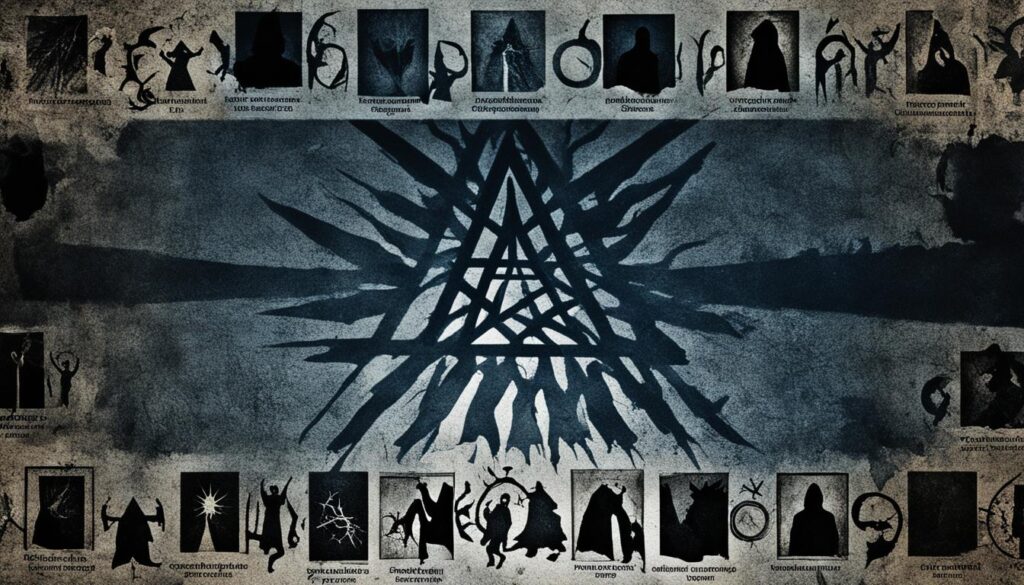
| Signs of Guilt, Condemnation, and Shame | Spiritual Strategies for Healing |
|---|---|
| Constant self-condemnation | Seek spiritual guidance |
| Questioning one’s actions | Practice self-compassion |
| Feeling unworthy of love and acceptance | Lean on a supportive community |
| Deep-seated sense of shame | Engage in spiritual warfare |
| Isolation from healthy relationships | Embrace self-forgiveness |
Feelings of Rejection, Belonging, and Loneliness Heightened
The enneagram’s dark side can lead to intensified emotions of rejection, not belonging, and loneliness. During such times, individuals may experience a profound sense of isolation, believing that they are not truly understood or accepted by others. These feelings can be strongly influenced by the presence of evil influences and the involvement in occult practices associated with the enneagram.
When enneagram enthusiasts delve into the depths of the occult, they often uncover dark personalities lurking beneath the surface. These dark personalities contribute to feelings of rejection and alienation, leading individuals to further distance themselves from the world around them. As the allure of the enneagram and its connection to the occult grows stronger, the isolation deepens, amplifying the feelings of not belonging.
In the pursuit of knowledge and self-discovery through the enneagram, it’s essential to be aware of the potential consequences of engaging with its darker aspects. The occult practices intertwined with the enneagram can, unbeknownst to many, create an atmosphere that fosters feelings of rejection, isolation, and loneliness.
It’s important to acknowledge that these feelings are not a true reflection of reality, as they are often fostered by the deceptive influences of evil. By recognizing the potential influence of the occult and the enneagram’s dark personalities, individuals can begin to dismantle the barriers that contribute to their sense of isolation and work towards finding a sense of belongingness within themselves and the world around them.

| Signs of Heightened Feelings of Rejection, Belonging, and Loneliness | Indicators of Evil Influences and Dark Personalities |
|---|---|
|
|
Confusion Over What You Believe
The enneagram’s dark side can lead to confusion and doubt over our beliefs. We may find ourselves questioning whether Jesus is truly for us, whether He is the only way. In the midst of this uncertainty, we may even be drawn towards satanic symbols.
This battle with demons and the enneagram’s dark energies can create a state of spiritual turmoil. The enneagram’s influence can challenge our faith and leave us grappling with deep-seated confusion.
It is important to navigate this battle with discernment and seek spiritual understanding. We must strive to separate the dark influences from the true essence of our beliefs, finding clarity and peace amidst the chaos.
“In the darkest times, our faith is tested, and it is through these trials that we often find the clarity and strength we seek.”
By acknowledging the potential connection between the enneagram and satanic symbols, as well as the presence of dark energies, we can engage in a transformative journey towards spiritual enlightenment. This journey involves confronting the battle with demons head-on, dispelling confusion, and reclaiming our true beliefs.
| Signs of Confusion Over What You Believe | Signs of Spiritual Clarity |
|---|---|
| Questioning Jesus’ relevance and significance | Gaining a deeper understanding of our faith |
| Drawn towards satanic symbols | Finding solace in the symbols of faith |
| Uncertainty about the path to salvation | Reaffirming our belief in Jesus as the way |
It is essential to navigate this battle with open hearts and minds, seeking truth and discernment in the face of confusion. By doing so, we can ultimately find spiritual clarity and overcome the challenges presented by the enneagram’s darker side.
Conclusion
Throughout our exploration of the connection between the enneagram and demonic influences, we have uncovered several signs and manifestations of potential spiritual interference. It is crucial to acknowledge the existence of the enneagram’s dark side and actively engage in spiritual warfare to counteract its negative effects. By seeking transformation and discernment, we can navigate the enneagram’s potential dark energies and find peace amidst the battle with demons.
Recognizing the presence of demonic symbolism within the enneagram is essential for our spiritual growth and protection. The enneagram, with its rich symbolism and deep insights into personality types, can be a tool for self-discovery and personal development. However, we must remain vigilant and discerning, guarding ourselves against the potential influence of malevolent forces that seek to distort the enneagram’s true purpose.
As we continue to explore the enneagram and its relevance to our lives, let us remember the importance of spiritual discernment. By understanding the battle with demons and actively seeking transformation, we can navigate the complexities of the enneagram with wisdom and clarity. May we harness the power of this powerful tool for self-awareness while remaining grounded in our spiritual journey.
FAQ
What are some signs of demonic influence in enneagram types?
Signs of demonic influence in enneagram types can include feeling discouraged, defeated, and depressed; experiencing a loss of spiritual desire; physical fatigue and sickness; doubting God’s goodness; negative and disturbing thought patterns; thoughts of returning to old lifestyle habits; resurfacing of old emotional wounds; battling with guilt, condemnation, and shame; heightened feelings of rejection and loneliness; confusion over beliefs.
How does feeling discouraged, defeated, and depressed relate to demonic influence in the enneagram?
Feeling discouraged, defeated, and depressed can be a sign of demonic influence in the enneagram. It involves a sense of hopelessness, overwhelming burdens, lack of peace, and feeling like giving up. These negative emotions can be fueled by the dark energies associated with the enneagram and can indicate the presence of evil influences.
What does it mean to experience a loss of spiritual desire in relation to demonic influence in the enneagram?
Experiencing a loss of spiritual desire is another sign of potential demonic influence in the enneagram. This includes difficulties with prayer, connecting with other Christians, and engaging in spiritual activities. It may also involve a draw towards occult practices or falling into the influence of satanic forces.
How does physical fatigue and sickness relate to demonic influence in the enneagram?
Physical fatigue and sickness can be manifestations of demonic influence in the enneagram. This can present as feeling drained, lacking energy, and having no motivation. These physical manifestations may be associated with the presence of supernatural entities and the evil energies connected to the enneagram.
What is the connection between doubting God’s goodness and demonic influence in the enneagram?
Doubting God’s goodness is a sign of potential demonic influence in the enneagram. This can involve struggling to trust God, feeling anger or disappointment towards Him, and believing that God is punishing or mad at oneself. It is important to understand the connection between negative energies, spiritual protection, and the doubts that may arise within the context of the enneagram.
How does the enneagram influence negative and disturbing thought patterns?
The enneagram can be a breeding ground for negative and disturbing thoughts. This can include anxious, fearful, or worrisome thoughts, as well as thoughts that convince individuals that nobody cares about them. These thought patterns may be influenced by demons and the shadow side of the enneagram.
How does the enneagram tempt individuals to return to their old lifestyle patterns?
The enneagram’s dark side may tempt individuals to consider returning to their old lifestyle patterns. This can involve placing thoughts in their minds about going back to habits that they have previously overcome. It is essential to recognize these temptations as inner demons and focus on the transformative journey of enneagram self-awareness.
What does it mean for old emotional wounds to resurface within the enneagram?
The enneagram’s influence can resurface old emotional wounds that individuals believed they had already addressed. This can lead to a reemergence of pain and struggles that they thought were in the past. It is important to engage in the spiritual warfare of the enneagram shadow and confront these negative traits.
How does the enneagram contribute to feelings of guilt, condemnation, and shame?
Demonic influence within the enneagram can fuel feelings of guilt, condemnation, and shame. Individuals may struggle with feeling inadequate, not good enough, and burdened by their perceived flaws. These feelings can be influenced by evil spirits and the dark forces present in the enneagram.
How does the enneagram heighten feelings of rejection, not belonging, and loneliness?
The enneagram’s dark side can intensify feelings of rejection, not belonging, and loneliness. Individuals may feel a sense of isolation, believing that nobody truly understands them or accepts them. These feelings can be influenced by evil influences and the occult practices associated with the enneagram.
What is the effect of the enneagram on confusion over one’s beliefs?
The enneagram’s dark side can lead to confusion and doubt over one’s beliefs. Individuals may question whether Jesus is truly for them, whether He is the only way, and may be drawn towards satanic symbols. This battle with demons and the enneagram’s dark energies can create uncertainty and spiritual turmoil.
Felicity, our Author, pens in-depth articles and guides that delve into the heart of personal discovery. Her narrative-driven approach weaves together theory, practice, and personal anecdotes, making the journey of self-exploration both relatable and inspiring. Felicity’s contributions help illuminate the path for those seeking a deeper understanding of themselves and their relationships.
The Big Five (OCEAN)
Deep Ocean Assessment for Tsunami Reporting: A How-To Guide
Trek into the world of tsunami detection with DART technology, uncovering the secrets of deep-sea surveillance and coastal protection.

As we explore the complex realm of tsunami detection using the DART system, a captivating landscape of techniques is revealed. The interaction between pressure changes, alert levels, and forecasting assessments showcases a meticulous approach to monitoring natural disasters.
But what lies beyond these algorithmic steps and theoretical analyses? What practical implications arise from this intricate dance with the deep ocean? The answer to these questions may shed light on the critical role DART technology plays in safeguarding coastal communities worldwide.
Key Takeaways
- Tsunami detection relies on pressure fluctuations in specific frequency bands for accurate reporting.
- Understanding sensor frequency response is crucial for enhancing early warning systems.
- Rayleigh waves from earthquakes trigger rapid reporting modes in DART gauges.
- Analyzing pressure signatures aids in differentiating seismic events for effective monitoring.
Tsunami Detection Algorithm Overview
The Tsunami Detection Algorithm in DART gauges autonomously detects and reports tsunamis by analyzing pressure fluctuations within the specific tsunami frequency band. When a minimum detection threshold of 3 cm is exceeded in the North Pacific, the gauges trigger the reporting mode.
This shift prompts the algorithm to predict tsunamis using a cubic polynomial fit to bottom pressure observations, providing a prediction time of 5.25 minutes. To ensure accuracy, instrumental spikes above 100 mm are filtered out to distinguish tsunamis from noise or anomalies.
The algorithm activates the reporting mode when the set threshold is surpassed, indicating a potential tsunami event. After four hours without detection, the gauges return to monitoring mode, ready to resume their vigilant observation of bottom pressure dynamics.
This systematic approach ensures efficient and reliable tsunami detection, allowing for timely warnings and enhanced coastal safety.
Theoretical Pressure Series Analysis
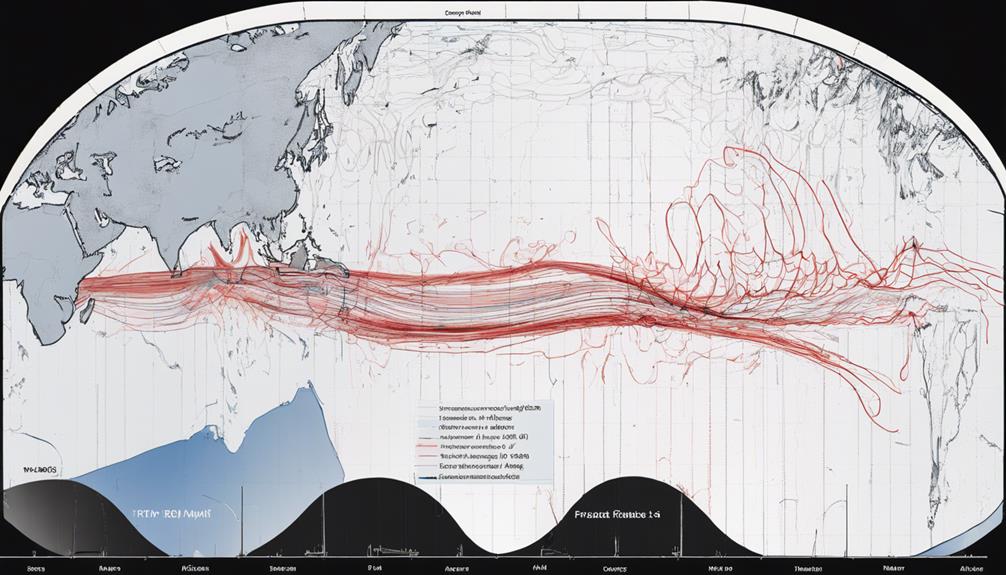
Analyzing pressure fluctuations in tsunami frequency bands involves a comprehensive evaluation of theoretical pressure series data to identify potential anomalies and trigger reporting modes as necessary.
The detection accuracy heavily relies on recognizing pressure differences within these specific frequency bands, which can be challenging due to initial discrepancies between time series and constant values.
Monitoring these pressure fluctuations over time reveals that the values tend to stabilize below threshold levels after approximately 4-5 hours.
Software algorithms play a critical role in this process by automatically initiating reporting modes when threshold exceedances occur in the pressure data.
Theoretical pressure series analysis not only aids in detecting anomalies but also assists in event flagging for further examination and continuous monitoring.
Frequency Response Evaluation
Upon examining the frequency response evaluation of deep ocean sensors, we observe a pronounced sensitivity to tsunami signals within the 2-90 minute band, highlighting the critical role these sensors play in detecting and analyzing tsunami events accurately.
- The near-unity response in the tsunami band emphasizes the importance of deep ocean sensors in capturing crucial tsunami signals.
- Rapid attenuation at lower frequencies enhances the prominence of tsunami and high-frequency signals in pressure readings, aiding in the precise detection of tsunami events.
- Deep ocean sensors excel at amplifying tsunami and high-frequency signals while effectively reducing background noise, ensuring reliable detection capabilities.
- Understanding the frequency response characteristics of these sensors is fundamental for refining tsunami detection algorithms and bolstering early warning systems to mitigate potential tsunami threats effectively.
Observed Tsunami Events Analysis

In analyzing observed tsunami events, we identify small-amplitude tsunamis in the North Pacific region. These detected tsunamis didn't reach the threshold necessary to activate the rapid reporting mode in DART gauges.
The analysis revealed that during these events, background noise levels in the pressure data either remained constant or slightly increased. The pressure fluctuations observed were attributed to Rayleigh waves generated by specific earthquakes.
Interestingly, the pressure differences caused by Rayleigh waves from the 1996 Andreanof Island earthquakes were of a magnitude that would trigger the rapid reporting mode in DART gauges, highlighting the variability in tsunami characteristics.
Rayleigh Waves Interpretation
Our examination of Rayleigh waves in the context of observed tsunami events in the North Pacific region reveals crucial insights into the seismic surface wave's interpretation and its significance in earthquake and tsunami monitoring.
- Rayleigh waves, as a seismic surface wave, propagate horizontally along the Earth's surface, inducing ground motion.
- Pressure sensors deployed on the seafloor detect the presence of Rayleigh waves generated by earthquakes.
- These waves manifest as high-frequency fluctuations in pressure data observed by DART gauges, providing valuable information for earthquake monitoring.
- By analyzing the distinct signatures of Rayleigh waves in pressure readings, scientists can differentiate between seismic events and better comprehend their role in tsunami generation.
Understanding Rayleigh waves' behavior and interpreting their signals is of utmost importance in enhancing our ability to monitor earthquakes and predict potential tsunami events accurately. The data obtained from studying Rayleigh waves aids in advancing our comprehension of seismic activities and their connection to tsunami occurrences.
Frequently Asked Questions
How Is the Deep Ocean Assessment and Reporting of Tsunami DART Helpful to Humans?
The deep ocean assessment and reporting of tsunami DART is incredibly helpful to humans. By providing early detection of tsunamis through deep ocean sensors, DART aids in issuing timely warnings, minimizing damage, and saving lives.
These sensors accurately predict tsunami wave behavior, transmitting crucial data to warning centers in real-time. The effectiveness of DART in forecasting tsunamis has been instrumental in safeguarding coastal communities and enhancing disaster preparedness efforts.
How Are Tsunamis Reported?
When tsunamis occur, they're reported using DART gauges that autonomously detect pressure fluctuations in the tsunami frequency band.
These gauges trigger reporting mode when pressure amplitudes exceed a minimum threshold of 3 cm in the North Pacific.
Once activated, the DART gauges remain in rapid reporting mode for at least four hours, continuously monitoring tsunami activity to provide crucial information for early warning systems and disaster management efforts.
Which of the Following Is Measured by the Deep Ocean Assessment and Reporting of Tsunamis DART System?
We measure water column pressure changes with the DART system to detect tsunami waves above. This system sends data from seafloor sensors to surface buoys and then to satellites for analysis.
By combining this sensor data with ocean floor maps, experts accurately predict tsunami behavior near coastlines.
The DART system is crucial for issuing tailored tsunami forecasts and early warnings to at-risk areas.
What Are the 5 Stages of a Tsunami?
In the lifecycle of a tsunami, five distinct stages unfold.
First, the initiation occurs due to seismic activity, triggering the displacement of water. This leads to the splitting phase, where energy forms multiple wave trains.
Subsequently, waves amplify in height when transitioning from deep to shallow waters.
The run-up stage follows as waves surge onto the coast, inundating land areas.
What Is the Process for Conducting a Deep Ocean Assessment for Tsunami Reporting?
The process for conducting a deep ocean assessment for tsunami reporting involves utilizing the advanced technology of the deepocean tsunami warning system. This system is designed to gather data from various sensors placed deep below the surface, enabling scientists to monitor and analyze oceanic activity. By collecting and analyzing this data, experts can accurately detect and report potential tsunamis, ensuring early warning and preparedness measures can be implemented to save lives and minimize damage.
Conclusion
In conclusion, the DART system serves as a vital tool in the early detection and reporting of tsunamis, offering a comprehensive methodology for analyzing pressure fluctuations and predicting tsunami occurrences.
By evaluating the frequency response of pressure differences and interpreting Rayleigh waves, the DART system enhances our understanding of tsunami events and aids in mitigating their potential impact.
Its practical applications underscore its crucial role in the U.S. National Tsunami Hazard Mitigation Program, providing invaluable insights for tsunami monitoring and reporting.
Eugene brings a fresh, dynamic voice to our platform as one of our talented Writers. Specializing in research-driven content, he explores the latest findings in psychology and personal growth, translating them into actionable insights for our readers. Eugene’s work is fueled by a curiosity about what makes us tick and a desire to help others unlock their potential.
The Big Five (OCEAN)
How to Access Ocean County NJ Assessment Records
Trek through the digital landscape of Ocean County, NJ assessment records to unearth hidden treasures and valuable insights waiting to be discovered.
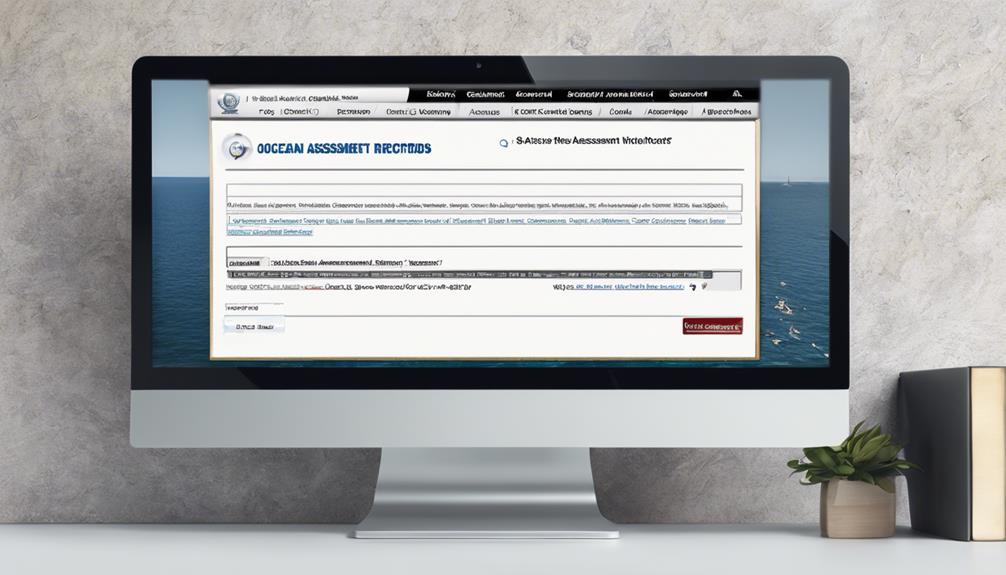
Standing at the digital shoreline of Ocean County, New Jersey, we are presented with a vast expanse of assessment records waiting to be explored.
Navigating through the intricate web of property evaluations and tax information can seem daunting at first glance. However, by unraveling the layers of resources available, we uncover a treasure trove of knowledge that can guide us through the depths of property assessment intricacies.
Join us as we embark on a journey to unveil the secrets of accessing Ocean County NJ assessment records, unlocking valuable insights along the way.
Key Takeaways
- Register online to access Ocean County NJ assessment records easily.
- Use the property search tool to find specific property details.
- Understand assessment data significance for informed financial decisions.
- Analyze property values, tax rates, and assessment ratios for accurate tax planning.
Overview of Ocean County NJ Assessments
Ocean County NJ assessments are a pivotal annual process that determines property values for taxation purposes. The County utilizes a tax rate of $2.323 per $100 of assessed value, with a ratio set at 72.76%. Property inspections are conducted by Realty Data Systems (RDS), and their inspectors can be identified by their RDS credentials. It's crucial for property owners to understand the assessment process as it directly impacts their tax obligations within the County.
The County's taxation system relies heavily on accurate property assessments to ensure fairness and transparency in tax allocations. Property owners should be aware of important dates, such as the tax appeal deadline of January 17th at 5:00 pm, set by the Monmouth County Board of Taxation for 2023. Additionally, Ocean County offers the convenience of online assessment appeal filing, streamlining the process for residents to address any discrepancies in their property tax assessments. Understanding the intricacies of property tax assessments in Ocean County is essential for all County residents.
Online Portal Registration Process
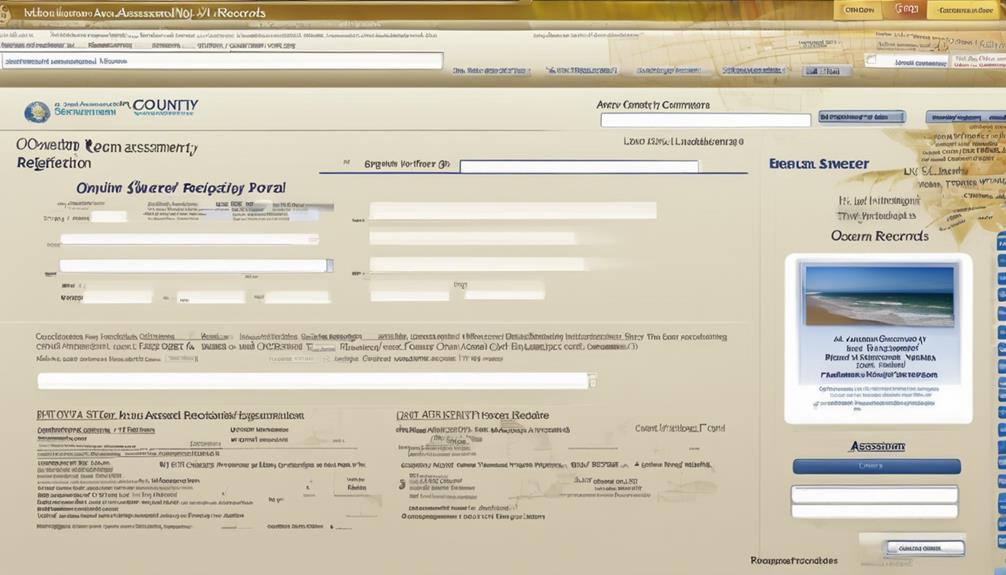
Upon visiting the official website of the Ocean County Clerk, users can initiate the registration process for accessing assessment records online by locating the 'Property Records Search' section. To set up your online portal account, follow these steps:
- Fill in the required information, including your name, email address, and create a password for account security.
- Verify your email to activate your account and gain access to the online portal.
- Once registered, you can log in anytime to explore Ocean County NJ assessment records, property details, and related information conveniently from your home or office.
The online portal offers a user-friendly interface that allows seamless navigation through property records in Ocean County. By registering and logging in, users can harness the power of technology to access vital property information with ease.
Searching for Specific Property Records
To efficiently locate specific property records within Ocean County NJ Assessment Records, utilize the online search tool provided. This tool allows users to access a wealth of information, including property tax records, ownership history, and tax assessments.
By entering the property address or parcel number, individuals can verify details such as lot size, building information, and assessed value. Moreover, the search tool enables users to retrieve data on property transfers, deed recordings, and historical assessments, providing a comprehensive view of the property's background.
Staying informed about changes in property assessments and tax obligations is crucial, and the online search tool simplifies this process by offering up-to-date records. Whether you're a homeowner, real estate professional, or researcher, accessing specific property information through this tool ensures that you have the necessary data to make informed decisions and understand the property's financial history.
Understanding Assessment Data
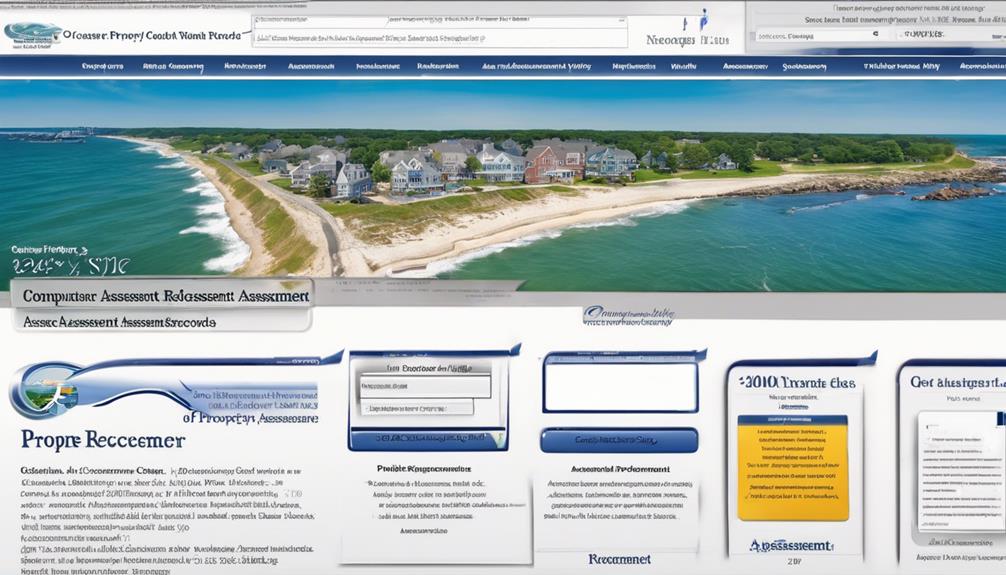
Understanding assessment data in Ocean County, NJ involves analyzing property values, tax rates, and assessment ratios to accurately calculate tax liabilities and comprehend the impact of property value on tax obligations.
When delving into assessment data, it's essential to consider various aspects that can influence property tax assessments:
- Property Values: Understanding how property values are determined is crucial for interpreting tax obligations accurately.
- Tax Rates: Analyzing tax rates is key to grasping how much tax a property owner will owe based on the property's assessed value.
- Assessment Ratios: Assessment ratios provide insight into how property values are assessed compared to their market worth.
Utilizing Assessment Records for Decision Making
When utilizing assessment records for decision making in Ocean County, NJ, individuals can access detailed information on property values, tax assessments, and ownership history to make informed choices regarding real estate investments or property evaluations. By leveraging assessment records, one gains insights into property values, tax obligations, and market conditions, enabling strategic decision-making. Here's a breakdown of how assessment records can aid in decision making:
| Benefits | Description | Impact |
|---|---|---|
| Understanding Property Values | Evaluate current market value of properties | Make informed investment decisions |
| Assessing Tax Obligations | Determine tax implications and obligations for each property | Plan finances effectively |
| Analyzing Market Conditions | Stay updated on market trends and conditions to identify opportunities | Make timely real estate decisions |
Frequently Asked Questions
How Do I Find My NJ Property Tax Records?
We find our NJ property tax records by visiting the Ocean County Tax Assessor's website. There, we can search for our property using the address or block and lot number. This search helps us access detailed information like property value, tax rates, deductions, and assessment history.
We make sure to check our property tax records annually for any updates or changes. If we need help, we contact the Ocean Township Tax Assessor's office for assistance.
Can I Get a Copy of My Deed Online Nj?
Yes, we can obtain a copy of our deed online in NJ. By accessing the Ocean County Clerk's website, we can search for and download our deed using the property details like block and lot numbers.
The online system offers easy access to property documents, including deeds, enabling us to securely download and print a copy from the comfort of our home or office.
How Do I Find My Block Lot and Qualifier in Nj?
We locate our Block, Lot, and Qualifier in NJ through the Tax Assessor's office or online databases. These unique identifiers pinpoint precise property locations, aiding in assessments and transactions.
The Block signifies an area in a town, the Lot specifies a plot within that block, and the Qualifier offers additional details. Understanding these codes is crucial for property-related matters in Ocean County, NJ.
Contacting the appropriate authorities helps us find our specific identifiers quickly and accurately.
What Is the Phone Number for Ocean County Public Records?
The phone number for Ocean County public records is (732) 929-2053. It's a direct line for inquiries about land or tax records through the County Clerk's office.
Callers can access information on property assessments, ownership data, and historical records. Additionally, details on recording requirements, fees, and appointment scheduling for accessing public records are available by calling this number.
It serves as a hub for various public record services offered by Ocean County.
What Information Can I Find in Ocean County NJ Assessment Records?
When accessing Ocean County assessment records, you can find information about property values, ownership details, and tax assessments for properties within the county. Ocean County assessment records are a valuable resource for individuals looking to gather information about real estate within the area.
Conclusion
In conclusion, accessing Ocean County NJ assessment records is like diving into a vast ocean of information, with each record holding valuable insights for property owners and investors.
By navigating through the online portal and understanding assessment data, individuals can make informed decisions and unlock the potential hidden within these records.
So, take the plunge and explore the depths of Ocean County's assessment records to uncover opportunities that await.
Eugene brings a fresh, dynamic voice to our platform as one of our talented Writers. Specializing in research-driven content, he explores the latest findings in psychology and personal growth, translating them into actionable insights for our readers. Eugene’s work is fueled by a curiosity about what makes us tick and a desire to help others unlock their potential.
-

 Self-Understanding3 months ago
Self-Understanding3 months agoUnderstanding DMCA Protections & Compliance
-

 Relationship Dynamics3 months ago
Relationship Dynamics3 months agoCan a Man Truly Love His Side Chick
-

 Enneagram of Personality1 week ago
Enneagram of Personality1 week agoEnneagram Test: Printable Version for Easy Self-Discovery
-

 Personality Exploration2 weeks ago
Personality Exploration2 weeks agoDiscover Your Traits with Atomic Habits Personality Test
-

 Personality Exploration3 months ago
Personality Exploration3 months agoDOPE Personality Test Explained: Traits & Types
-

 Personality Exploration3 months ago
Personality Exploration3 months agoAlpha Beta Omega Sigma Female Personality Quiz
-
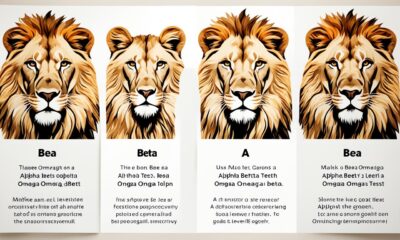
 Personality Exploration2 weeks ago
Personality Exploration2 weeks agoAlpha Beta Omega Personality Test Explained
-

 Self-Understanding2 months ago
Self-Understanding2 months agoDiscover Your Traits with Our Personality Test
